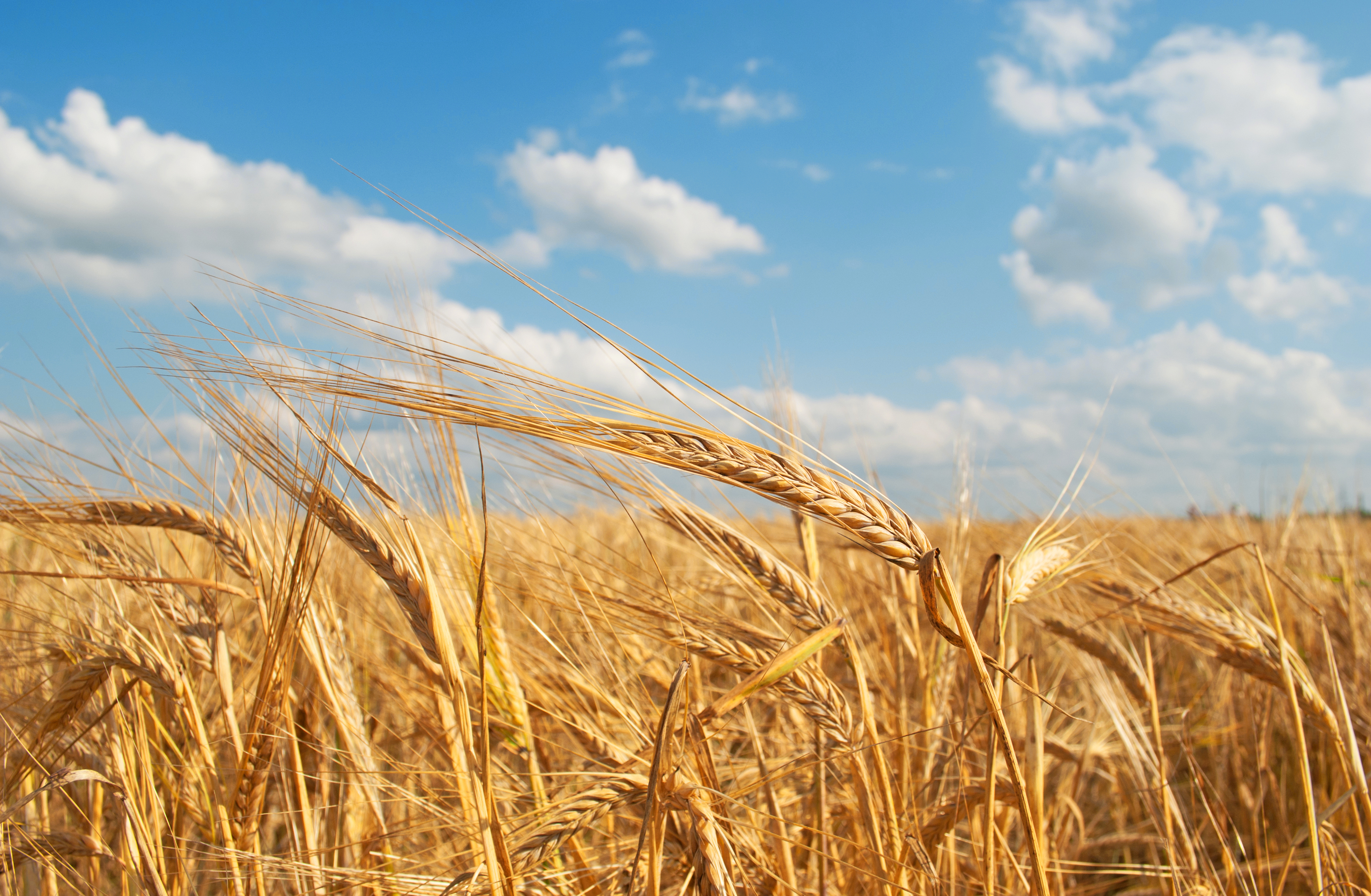Published November 12, 2024 • 7 Min Read
2024 has been a transitional year for crop and livestock prices with each going in opposite directions. Grains and oilseeds have had to transition from tight supplies and demand rationing, which was prevalent over the past four years, to markets which are now oversupplied and searching for demand. The resulting high crop prices which accompanied this period, placed downward pressure on livestock feeding margins, resulting in herd liquidation for both cattle and hogs. As livestock supplies shrank, record high prices were experienced in live cattle during 2023 and higher than normal seasonal prices are being seen in hog prices.
Soybeans
Taking a closer look at soybeans, U.S. and global supplies are projected to grow substantially this year. The result has been falling prices with soybean values nearly slashed in half from their 2022 high. U.S. new crop inventories are projected to be their third highest in history while world supplies are projected at their highest in history. The growth of Brazilian soybean production has continued to erode the once dominant U.S. export market. This has led to another disappointing start to the new crop export season with sales currently well below the pace needed to reach USDA forecast. The bright spot for long term U.S. bean demand remains the crush industry which is projected to grow 6% year-over-year. This industry does carry political risk associated with renewable fuel policy which leaves the market vulnerable to surprises. From the production side, both the USDA and StatsCan estimate yields at record levels of 53.1 bu/acre for U.S. production and 46.4 bu/acre respectively for Canadian production. Moving forward, trade will focus on the South American growing season and the potential development of a La Nina and what that may mean for world supplies and potential U.S. export demand.
Corn
Looking at the corn market, North American producers are projected to produce a near record crop. This is reflected in the USDA and StatsCan projected record national yields of 183.8 bu/acre for the U.S. and 167.8 bu/acre for Canada. However, unlike the beans, the U.S. corn export program has been quite strong and remains above USDA expectations. Despite strong production, world ending stocks are projected to fall year-over-year. This will place greater emphasis on the South American growing season, with focus of trade already firmly on South American weather. Going forward trade will continue to watch the pace of U.S. demand – both exports and ethanol along with South American weather. Brazilian bean planting pace will also be closely watched as a late planting window could translate to delays and increased drought risk for 2nd crop corn.
Wheat
Wheat markets have been no stranger to global weather risks. Europe’s top producer, France, experienced record wet conditions resulting in both quality and yield reductions. The USDA projects European wheat production down 8.8% year-over-year as a result. In Russia, several of their top growing regions have announced states of emergency due to ongoing drought, which has delayed winter wheat seeding. Turning to the U.S., growing conditions were largely friendly, and production is forecasted at the highest level since 2016. This leaves U.S. ending stocks projected higher year-over-year. Although U.S. supplies are growing year-over-year, major exporting countries which include the U.S., Canada, Russia, Argentina, Australia, the EU and Ukraine as a whole, have fallen to the tightest combined ending stocks vs total use ratio in history. This in and of itself does not mean that markets must rally, but it does lend itself to a global export program that has very little room for error. Moving forward, trade will carefully watch for any factors that could add pressure to major exporting countries. Whether it be meaningful Ukrainian aggression towards Russian export infrastructure, a smaller Russian or U.S. winter wheat crop, Australia La Nina weather pattern shift, or any major exporters looking to keep a tight fist for their own domestic wheat needs.
Canola
On to the Canola market. With harvest complete in the prairies, producers will look forward to final StatsCan survey-based data to be released in December. The previous model-based data predicted national yields at 38.4 bu per acre in the September StatsCan report. Although this is the last official estimate we have had from StatsCan, provincial agencies have updated yield numbers with most recent data suggesting a national yield around 35 bpa mark. This number is still a moving target and will likely fuel the debate on what actual supply will be for some time. The demand side of the equation is off to a fast start. Both exports and crush have had their best start to the marketing year in 5 years. Both crush and exports are ahead of where we would expect them to be for this time of year. The elephant in the room moving forward is the China anti-dumping probe that was launched in early September. This created speculation of incoming Chinese tariffs in response to Canadian tariffs on Chinese-made electric vehicles. While the EV tariffs started on October 1st, Canada recently announced measures to allow temporary relief from the tariff. Producers across Canada hope that the trade measures will ease tensions with China – our largest canola purchaser. However, at this time, outlook for what China might do going forward is murky at best. Moving forward, trade will watch if this strong export pace continues, and if canola’s discount structure to its European counterpart, EU rapeseed, will remain historically wide.
Cattle
The North American cattle herd continues its contraction phase which started in earnest in 2022. Shrinking feeder cattle supplies have led to record high prices on both sides of the border during 2023 and the beginning of 2024. The Canadian cattle inventory as of July 2024 stood at 11.935 million head, this was down 1.4% compared to the same period in 2023 and represents the smallest herd total since 1987.
Taking a closer look, the Canadian beef cow herd fell for the fourth consecutive year. The July beef cow inventory was reported at 3.485 million head, down 2.2% below last year and the smallest total since 1988. The Canadian dairy cow herd posted a modest increase of 0.4% compared to last year at 969 thousand head. Looking at replacement numbers, both beef cow and milk cow replacements over 1 year of age were steady to below last year’s totals. This is signaling limited if any expansion plans for the Canadian cattle industry into 2025.
Like the cattle industry, the North American hog industry has also experienced a liquidation cycle, but early indicators are pointing to an industry which is slowly moved towards herd stabilization. The Canadian inventory of hogs and pigs as of July totaled 13.995 million head, up 1.3% compared to last year but remains 0.5% below the 5-year average. This would represent the third smallest inventory total since 2015 with only 2023 and 2022 being smaller.
The Canadian breeding herd has fallen for three consecutive years. As of July, the breeding herd stood at 1.233 million head, down 0.9% compared to last year and 1.2% below its five-year average. This was the smallest Canadian breeding herd posted since 2014.
Hogs
The total market hog inventory in Canada as of July was 12.762 million head, up 1.5% compared to last year but still 0.5% under the five-year average. The combined inventory of hogs and pigs for both the U.S. and Canada were 1.3% below last year. This reflects a 2.8% decrease in the combined breeding herd but a 1.7% increase in the combined market hog inventory. The increase was a result of the factors listed above.
Overall, both the cattle and hog industry have experienced a liquidation cycle which started in 2022. This liquidation cycle is beginning to slow, however expansion is not immediately imminent. Producers have taken advantage of the drop in feed costs and have extended days on feed for both cattle and hogs resulting in heavier weights. This increase tonnage has offset some of the reduction in the absolute numbers for each herd. Gains in efficiencies have also allowed producers to do more with less. Looking forward into 2025, the market will be looking for signals that high beef and pork prices are beginning to curtail demand both domestic and export.
The Simpson/Caputo Group is a team of four Commodity Futures Specialists with RBC Dominion Securities. They work with Agricultural producers throughout Canada helping them manage their commodity price risk by developing market plans using futures and futures options.
This article is intended as general information only and is not to be relied upon as constituting legal, financial or other professional advice. A professional advisor should be consulted regarding your specific situation. Information presented is believed to be factual and up-to-date but we do not guarantee its accuracy and it should not be regarded as a complete analysis of the subjects discussed. All expressions of opinion reflect the judgment of the authors as of the date of publication and are subject to change. No endorsement of any third parties or their advice, opinions, information, products or services is expressly given or implied by Royal Bank of Canada or any of its affiliates.
Any information, opinions or views provided in this document, including hyperlinks to the RBC Direct Investing Inc. website or the websites of its affiliates or third parties, are for your general information only, and are not intended to provide legal, investment, financial, accounting, tax or other professional advice. While information presented is believed to be factual and current, its accuracy is not guaranteed and it should not be regarded as a complete analysis of the subjects discussed. All expressions of opinion reflect the judgment of the author(s) as of the date of publication and are subject to change. No endorsement of any third parties or their advice, opinions, information, products or services is expressly given or implied by RBC Direct Investing Inc. or its affiliates. You should consult with your advisor before taking any action based upon the information contained in this document.
Furthermore, the products, services and securities referred to in this publication are only available in Canada and other jurisdictions where they may be legally offered for sale. Information available on the RBC Direct Investing website is intended for access by residents of Canada only, and should not be accessed from any jurisdiction outside Canada.
Share This Article






